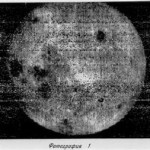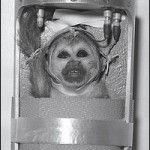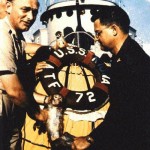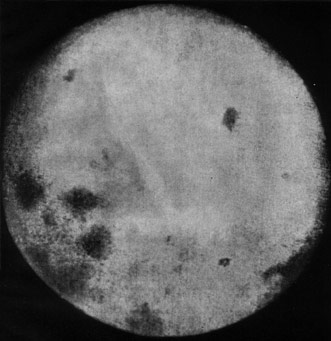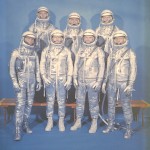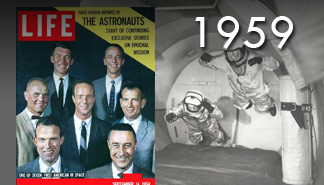
 Orbital Launch Manifest 1959 (6.0 KiB)
Orbital Launch Manifest 1959 (6.0 KiB)
 US Rocket Development 012959 (5.7 MiB)
US Rocket Development 012959 (5.7 MiB)
January: NASA contracted with McDonnell for development and production of the Mercury spacecraft.
January: Review of military records to find candidates for astronaut selection by White, Voas, Gamble, and Augerson. Requirements were:
-Less than 40 years old
-Less than 71 inches tall
-1500 hours flight time
-Bachelor’s degree
-Graduate of test pilot school
-Good physical condition
|
Personnel records screened |
Met minimum standards |
% |
|
|
USAF |
225 |
58 |
26 |
|
USN |
225 |
47 |
21 |
|
USMC |
23 |
5 |
22 |
|
US Army |
35 |
0 |
0 |
|
TOTAL |
508 |
110 |
22 |
January 2: Launch of Luna 1, the first spacecraft to reach the vicinity of the Moon and the first of the Luna program of Soviet automatic interplanetary stations successfully launched in the direction of the Moon. The measurements obtained during this mission provided new data on the Earth’s radiation belt and outer space. The Moon was found to have no detectable magnetic field. The first ever direct observations and measurements of the solar wind, a strong flow of ionized plasma emanating from the Sun and streaming through interplanetary space, were performed. The spacecraft missed the target and flew by the Moon at a distance of 5,900 km at the closest point. Luna 1 then became the first man-made object to reach heliocentric orbit and was then dubbed a “new planet” and renamed Mechta. The name “Luna-1” was applied retroactively years later. Luna-1 was originally referred to as the “First Cosmic Rocket”, in reference to its achievement of escape velocity.
 1959 Luna 1 (USSR) (1.2 MiB)
1959 Luna 1 (USSR) (1.2 MiB)
January 12: The NASA selected the McDonnell Aircraft Corp. of St. Louis to construct the manned satellite vehicle to be used under Project Mercury. It was hoped that it could carry a man into space in two years.

January 19: The National Aeronautics and Space Administration signed a formal contract with North American Aviation (Rocketdyne) for $102 million covering the design and development of a single chamber liquid propellant rocket engine of 1.5 million pounds thrust (the F-1, to be used in the Saturn S-1 stage and Nova rockets). This was an earlier Air Force project that had been dropped.
Janurary 21: Attempted launch of a Discoverer satellite at Vandenburg AFB with failure of the Thor-Agena A launch vehicle (pad explosion). First launch involving the Agena.
 Discoverer Corona Launch List (167.5 KiB)
Discoverer Corona Launch List (167.5 KiB)

The Agena second stage was the first launch vehicle that could be restarted in space. It burned hypergolic fuel – UDMH and Red Fuming Nitric Acid. It was used 365 times from 1/59 until 2/87. Agena A had a thrust of 15,500 pounds for 120 secs. The Agena B and D had a thrust of 16,000 pounds for 240 secs. (Agena C was proposed but never developed). Success rate of all versions of the stand alone vehicle was 99.7%. Missions involving the Agena A were successfully launched on only 12/20 times because of failure of the first stage.
 Agena (33.0 KiB)
Agena (33.0 KiB)
 Thor-Agena (3.8 MiB)
Thor-Agena (3.8 MiB)
January 27: NASA announced that 110 possible candidates for the first United States flight into orbit had been selected from among military test pilots, and that further screening and testing would continue until the final group had been chosen.
January 28: It was revealed that study of Vanguard I data established the Earth as being slightly pear-shaped, rather than flattened at both poles.

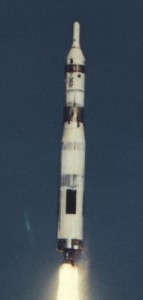

February 6: First successful launch of the Titan I. This two stage ICBM weighed 230,000 lbs and the two LR-87 first stage engines burned LOX and RP-1 with a thrust of 300,000 lbs. Second stage thrust was 80,000 lbs. Range was 500-8000 miles. 108 were built. Only 53 out of 70 launches were successful. It was operational from 1961-1965. In 1963, a total of 63 missiles were deployed in the US. Later developed into the Titan family of rockets.
 Titan Launch List (94.3 KiB)
Titan Launch List (94.3 KiB)
February 17: Vanguard 2 was successfully launched from LC 18A (satellite was 23.7 lbs).
 1959 Vanguard 2 (Universal News) (3.8 MiB)
1959 Vanguard 2 (Universal News) (3.8 MiB)


February 28: Discoverer 1 launched by a Thor-Agena into a polar orbit from Vandenburg AFB (first polar orbit).
The Discoverer satellites were part of a secret photographic reconnaissance project (also called Corona) by the Air Force and the CIA/ARPA. The cover story was that these satellites were research oriented with a goal of attempting to recover biological payloads from orbit for life science purposes. The Discoverer series ended with Discoverer 39 in 4/18/62, but the Corona Project continued with secret launches until May 1972. 70 mm photos were taken across the Soviet Union from polar orbits and then recovered after re-entry several days later by C-119 mid air catch. There were only 13 successful photo recoveries (9 mid air and 4 ocean) in the first 40 Discoverer missions. Initial resolution was 7.5 m and almost all of the first successfully recovered photos from the Discoverer series were out of focus or of poor quality until technical problems were resolved. However, from 1966-1971, 32 successful consecutive missions were conducted with the return of high quality photos (2 meter resolution using the KH-4 satellite). There was a total of 136 Corona missions with 163 successful photo returns (there were multiple returns on later missions).
February: Mercury astronaut selection: The first 55 of the 110 that were deemed acceptable were invited go to the Pentagon for written tests, technical interviews, psychiatric interviews, and medical history reviews.
- 55 invited
- 8 declined invitations to continue
- 47 actually processed (see detail below)
- 15 disqualified (medical, psychological and stress testing)
- 32 were eventually sent to Lovelace Clinic for medical screening
The first stage was a technical interview with each candidate. A three-man NASA team composed of Donlan, North, and Gamble conducted this. Engineer Charles Donlan had on the table the thick specifications book from MacDonnell Aircraft Co. for the proposed Mercury capsule, another thick book about the launch rocket, a world map of the planned orbital trajectories, and various charts and tables. Each man was shown these items, key features were pointed out, and all his questions were answered as well as we were able. Next, Warren North, then Chief of the Manned Space Flight Program at NASA Headquarters, quizzed the candidate in detail about his flight training and experience. An Industrial and Organizational Psychologist (Dr. Gamble) asked a variety of motivational questions.
The second stage was a psychiatric evaluation. Two psychiatrists, Dr. George Ruff and Dr. Edwin Levy, who were Air Force officers, conducted this. Each recorded his independent conclusions, and then they compared notes and reported to the committee.
The third stage was a medical interview based on detailed review of the up-to-date medical records brought along by each candidate. Dr. Bill Augerson, the Army flight surgeon, did this. They shocked by the fact that a few of the men were too tall, some of them by many inches. In this way they lost several good competitors who appeared to be highly qualified and had volunteered, but could not fit in the capsule.
The fourth stage was a set of three written tests selected and administered by Dr. Bob Voas, helped by other psychologists. He gave the Minnesota Engineering Analogies Test, the Doppelt Mathematical Reasoning test, and the Miller Analogies Test. The last-named is a difficult test of logical reasoning ability, designed for university graduate students. Most of the men did quite well on all three tests, but with different patterns of scores.
February 6 – March 13: In Phase I of Mercury astronaut selection, 32 astronaut candidates screened for 7½ days at Lovelace Clinic, Albuquerque, NM in five groups of six and a final “group” of two. Only one medical disqualified: Lovell. Six failed the stress tests (Lawrence and 5 others).
Conrad & Lovell selected by NASA Sep. 1962; Lovell medically disqualified (liver) at Lovelace.
Capt. Bob Bell, USAF was ranked #8 in the final analysis and so only just failed to be selected; he was killed in Viet Nam in 1965.
LCDR Donald Shelton, USN (colleague of Schirras at USNTPS).
James Wood selected for X-20 Sep. 1959.
William P. Lawrence, USN, one of the top candidates; med disqualification due to heart murmur; later POW in Vietnam June 1967-March 1973; retired Vice Admiral; father of astronaut Wendy Lawrence.
Robert Solliday (5th group) was also a finalist for the 1962 selection.
In Phase II the men went in small groups to the special clinic at the Lovelace Foundation in Albuquerque, where they were given for seven days probably the most exhaustive physical and physiological examinations ever given before then to obviously healthy men.
Conrad’s sigmoidoscopy exam at Lovelace was not as gentle as desired. That evening at the Kirtland AFB bar he confronted the doctor and the discussion became heated. He was subsequently disqualified as unfit for long duration space flight. He repeated this story every 3-4 day during Skylab mission.
For Phase III, they went to the AeroMedical Laboratory at Wright Air Development Center, Dayton, another week. There they were subjected to 11 strenuous stress tests cold, heat, noise, vibration, centrifuge, and so on and 21 additional psychological tests.


March 3: Pioneer IV launched by a Juno II rocket from LC5. First US spacecraft to be placed in a Solar orbit after passing within 37,000 miles of the Moon (Luna 1 was the first to achieve a helio-centric orbit). The final stage also carried a trigger which was a photoelectric sensor to be turned on by reflected light from the Moon, as a test for future photographic missions. The approach to the Moon was not close enough for the trigger to function. Pioneer IV passed the Moon at a distance of 37,300 miles on March 4. It entered into an orbit around the Sun with a perihelion of 91.7 million miles and
an aphelion of 107.9 million miles, and an orbit period of 394.75 days.
 Pioneer IV (4.4 MiB)
Pioneer IV (4.4 MiB)
 1959 Pioneer 4 (Universal News) (4.8 MiB)
1959 Pioneer 4 (Universal News) (4.8 MiB)
March 17: The USS Skate (SSN-578) surfaces at the North Pole.
March 6: First limited static test firing of the Rocketdyne F-1 engine.
April 1: Final selection of the Project Mercury astronauts.
The first check of military test pilot records revealed that 508 test pilots met the
basic astromaut requirements. With suggestions from commanding officers, this was
reduced to 110. With the help of officers who were personally involved with their flight
training, this was further reduced to 69. These people were all invited to apply, but only 32 volunteered. These all went on to undergo physical examinations and were reduced to 14.
The selection on the final 7 came at 2 p.m., April 9, 1959
April 9: T.Keith Glennan (NASA Admin.) announced selection of seven Mercury
astronauts in the ballroom of the Dolly Madison House, NASA’s tempory headquarters
in Washington, D.C.:
|
Surname |
Name |
Birth date |
Age |
Rank |
Service |
Education |
Experience |
|||
| Flt Hr Tot (Jet) |
Operational |
Test |
NASA-related |
|||||||
| Carpenter | Malcolm Scott | 1925May01 | 33.9 | Lt. (O3) | USN | BS U. Colo. 1962 | 2800 (300) | Korean vet | NTPS, 13, 1954 | |
| Cooper | Leroy Gordon, Jr. | 1927Mar06 | 32.1 | Capt. (O3) | USAF | U. Hawaii 1946-49; BS aero. eng. AFIT 1956 |
2300 (1400) | AFFTPS, 56D, 1957 | ||
| Glenn | John Herschel, Jr. | 1921July18 | 37.7 | Lt. Col. (O5) | USMC | Muskingum College; additional coursework at Armed Forces Institute | >5000 (1500) | Almost 150 combat missions in WWII and Korea, 3 MiGs | NTPS, 12, 1954; Test pilot | Feb.-June ‘58: Langley reentry sim; NADC centrifuge; MDAC Mercury design consult |
| Grissom | Virgil Ivan | 1926Apr03 | 32.8 | Capt. (O3) | USAF | BS mech. eng. Purdue 1950 | >3000 (>2000) | Korean | AFFTPS, 56D, 1957; Fighter test pilot | |
| Schirra | Walter Marty, Jr. | 1923Mar12 | 36.1 | Lt. Cmdr. (O4) | USN | Newark Coll. of Eng. 1941-42; BS USNA 1945 | 3000 (1700) | Korean | NTPS, 20, 1958; Test pilot | |
| Shepard | Alan Bartlett, Jr. | 1923Nov18 | 35.4 | Lt. Cmdr. (O4) | USN | BS USNA 1944 | 3600 (<1800) | NTPS, 5, 1950; Test pilot | ||
| Slayton | Donald Kent | 1924Mar01 | 35.1 | Capt. (O3) | USAF | BS aero. eng. U. Minn. 1949 | 3400 (2000) | 56 B-25 combat missions over Europe, “several” over Japan. | AFFTPS, 55C, 1955; Test pilot | |


 Selection Press Conference (111.7 KiB)
Selection Press Conference (111.7 KiB)
Mercury Selection Press Conference.mp4
April 13: Discoverer 2 launched from Vandenburg AFB.
April 14: Vanguard SLV-5 failed to orbit after launch from LC18A.


April 14: First test flight of the Atlas D. A total of 27 out of 117 launches failed (77% success rate). It became operational in September 1959 and deactivated in 1965.
April 29: The annual Space Medicine Branch meeting was held in Los Angeles, Dr. Hubertus Strughold was elected President. The Aeromedical Association changed its name to the Aerospace Medical Association. There was a proposal from several of the parent organization members to eliminate the SMB since this name change would incorporate that organization. The proposal was defeated. One panel, “Space Bioscience and Technology”, chaired by Dr. Hubertus Strughold, was presented (see “Space Medicine Panel 1959.pdf”).
 Space Medicine Panels 1959 (21.0 KiB)
Space Medicine Panels 1959 (21.0 KiB)
 Space Medicine Panel 1959 (180.8 KiB)
Space Medicine Panel 1959 (180.8 KiB)
 SMB Future 1959 (37.6 KiB)
SMB Future 1959 (37.6 KiB)
 Program 1959 (679.3 KiB)
Program 1959 (679.3 KiB)
 Abstracts 1959 (1.2 MiB)
Abstracts 1959 (1.2 MiB)

April 27: The first training week was as follows: Monday, April 27, check in; April 28, general briefing; April 29, spacecraft configuration and escape methods; April 30, support and restraint; May 1, operational concepts and procedures. These lectures were presented by specialists in the particular field of study. Besides the above, unscheduled activities involved 3 hours flying time and 4 hours of athletics.
April: Group 1 astronaut training: NASA LaRC, Mercury Analog Trainer no. 1 (attitude control), approximately 8 hours per astronaut.
 Mercury Program Training Facilities (56.7 KiB)
Mercury Program Training Facilities (56.7 KiB)
 Mercury Training (6.7 MiB)
Mercury Training (6.7 MiB)

May 28: Jupiter IRBM launched from Cape Canaveral carried rhesus Able (provided by US Army) and squirrel monkey Baker (provided by US Navy) on a ballistic flight to 480 km altitude and 2740 km downrange. They experienced 38 G and weightlessness for 9 minutes. The physiologic parameters that were measured were as expected and very tolerable, but for political reasons (untrained US monkeys were used in a last minute decision to replace trained Indian monkeys) performance parameters were not measured. Recovered by USS Kiowa. Able died on June 1 while undergoing surgery to remove an infected medical electrode and is on display at the Smithsonian Air and Space Museum.
 Able Baker (4.9 MiB)
Able Baker (4.9 MiB)
 1959 Able Baker (Universal News) (5.5 MiB)
1959 Able Baker (Universal News) (5.5 MiB)


May: Group 1 astronaut training: NASA LaRC, aircraft flying (general proficiency), approximately 460 hours per astronaut, mostly in Convair F-102’s (not made available until August). Astronauts also train on scuba techniques with US Navy underwater demolition teams at Little Creek, Va.
June 3: Discoverer 3 with the Thor-Agena launch vehicle was launched with four mice that were planned to be recovered after 28 hours (possible cover story), but was unsuccessful due to malfunction of the Agena second stage.
 Discoverer 3 (9.6 MiB)
Discoverer 3 (9.6 MiB)
 1959 Discoverer 3 (Universal News) (4.6 MiB)
1959 Discoverer 3 (Universal News) (4.6 MiB)



June 8: First manned flight of the X-15 at Edwards AFB. This flight was unpowered and piloted by Scott Crossfield. He also made the first powered flight on September 17, 1959. Three planes made 199 flights until October 24, 1968. Twelve pilots flew, including astronauts Neil Armstrong and Joe Engle. Records were an altitude of 354,330 ft (67.0 miles) on Flight 91 on 8/22/63 and a speed of 4519 mph (Mach 6.72) on Flight 188 on 10/3/67. On 11/15/67, Michael J. Adams was killed on Flight 191 after developing a hypersonic spin. The X-15 XLR 99 engine had a thrust of 57,000 pounds.
 X-15 Launch List (84.7 KiB)
X-15 Launch List (84.7 KiB)
June 18: Failed launch of a Soviet Luna satellite (E-1 No. 5).
June 22: Vanguard SLV-6 failed to orbit after launch from LC18A.
June 25: Failed attempt to launch Discoverer 4 with a Thor-Agena A at Vandenburg AFB.
June 18: A centrifuge program was conducted at Johnsville, Pennsylvania, to investigate
the role of a pilot in the launch of a multi-stage vehicle. Test subjects were required to perform boost-control tasks, while being subjected to the proper boost-control accelerations. The highest g-force experienced was 15, and none of the test subjects felt they reached the limit of their control capability. As a note of interest, one of the test subjects was Neil Armstrong.
June 23: To lay the groundwork for the selection of Dyna-Soar crews, Brig. Don Flickinger (Cmd. Surgeon, Air Force R&D Command), held a meeting in his office at Andrews AFB, Maryland. USAF School Aviation Medicine Gen. Benson sent Lawrence Lamb, M.D., as his representative. Also present were: Dr. Randolph Lovelace; representative of Office of Surgeon General; representatives of Edwards AFB, including Maj. Bob White, X-15 pilot.
It was agreed that all pilots flying aircraft beyond the level of X-15 would be classified as astronauts; all would be evaluated by medical evaluation for the Air Force astronaut selection program. First four Dyna-Soar candidates to go through Lovelace Clinic, remainder to USAF SAM. Dr. Lamb to go to Lovelace to review procedures. All pilots entering Edwards AFB Test Pilot School would also receive the same examination; on graduation, would provide pool of young test pilots for future NASA, USAF astronaut requirements. Eventually ten test pilots at Edwards AFB—three NASA civilians and seven USAF officers—were given medical examinations to qualify them as possible X-20 pilots. This occurred in August 1959 at the USAF School of Aerospace Medicine (San Antonio).
| Surname | Name</span> | Rank | Service | Education | TPS | Experience | Med Exam | |
| Armstrong | Neil Alden | civ. | NASA | BS, Purdue 1947-9, 1952-5 | N/a | NASA test pilot | ||
| Bock | Charles | USAF | Brooks AFB | |||||
| Dana | William H. | civ. | NASA | NASA test pilot | ||||
| Gordon | Henry C. | Capt. | USAF | |||||
| Knight | William J. | Capt. | USAF | |||||
| Rogers | Russell L. | Capt. | USAF | Brooks AFB | ||||
| Thompson | Milton O. | civ. | NASA | NASA test pilot | ||||
| Wood | James W. | Maj. | USAF | |||||
| TBD | USAF | |||||||
| TBD | USAF |
June: Group 1 astronaut training: Astronauts reported to Wright Patterson AFB for first round of centrifuge training, using normal launch profiles, 5½ minutes reaching 8 G max. All had experienced WPAFB centrifuge during pre-selection testing. Glenn had also experienced Johnsville centrifuge in NACA testing in 1958, but it was new for the others.
July 1: Use of the Jupiter launch vehicle for Project Mercury was canceled.
July 16: Failed Explorer (S-1)/Juno II launch from LC5.
July: The Mercury astronauts completed disorientation flights on the three-axis space simulator at the Lewis Research Center.
August 15: Group 1 astronaut training: US Navy, Johnsville, Pa., centrifuge (acceleration training, re-entry control), approximately 48 hours per astronaut. Four formal centrifuge programs were conducted at the Aviation Medical Acceleration Laboratory’s centrifuge at the Naval Air Development Center at Johnsville, Pa., as part of the group training program. The first two programs were combined engineering-feasibility and preliminary astronaut familiarization programs while the last two were intensive operational training programs for the Redstone and the Atlas flights. All normal Atlas and Redstone profiles and abort profiles up to 16G with an average of 70 dynamic runs per man. The configuration of the centrifuge gondola and the computer control system varied between programs. The gondola was configured to simulate spacecraft for either orbital or ballistic missions. The simulated attitude control system was run closed loop and the centrifuge was run open loop. The astronauts wore full pressure suits and some runs were made at a simulated altitude of 28,000 feet. Overall, the astronauts experienced an average of 45 hours on the centrifuge. These programs appeared to be extremely valuable both for training and in providing an opportunity for checking out items of personal equipment and for demonstrating the adequacy of the spacecraft instrumentation for viewing under acceleration. Cooper, Glenn and Shepard were assigned to investigate effects of high-G runs in Mercury contour couch on Johnsville centrifuge. William K. Douglas, MD, USAF major, assigned to lead team of flight surgeons supporting testing. Astronauts eventually reached 16 g, decided that was acceptable max. Cooper recalled that he had reached 18 G, with many dependent petechiae and bruising, and the decision was then made to limit training to 15 G. Glenn and unspecified other(s) assigned to investigate effects of tumble on splashdown using Johnsville centrifuge: rapid transition from +2Gx to –2Gx up to +9Gx. Flight surgeon William Augerson also participated; after a run of +10Gx he was coughing uncontrollably because his heart essentially collapsed his left lung.


August 7: Explorer VI successful launched on a Thor-Able from LC5. First photograph of Earth from orbit.
 Explorer VI (2.6 MiB)
Explorer VI (2.6 MiB)
 1959 Explorer 6 (Universal News) (3.1 MiB)
1959 Explorer 6 (Universal News) (3.1 MiB)
August 13: Discoverer 5 launched from Vandenburg AFB on a Thor-Agena A.
August 15: Failed Beacon/Juno II launch from LC5.

August 19: Discoverer 6 launched from Vandenburg AFB on a Thor-Agena A.
August 21: Launch of Litle Joe 1, a test of the Mercury launch escape system. First unmanned test launch in the Mercury Program.
 Mercury Unmanned Launch List (54.0 KiB)
Mercury Unmanned Launch List (54.0 KiB)
August 27: Slayton had first episode of idiopathic atrial tachycardia after riding the Johnstown centrifuge. Later examined by cardiologists Eugene Braunwald and Paul Dudley White.

September 9: Launch of Big Joe 1, an Atlas-D Mercury interface suborbital test flight. Objectives of this test flight were to determine the performance of the ablation shield and measure afterbody heating; to determine the flight dynamics of the spacecraft during reentry; to evaluate the adequacy of the spacecraft recovery system and procedures; to familiarize operating personnel with Atlas launch procedures; to evaluate loads on the spacecraft while in the flight environment; to observe and evaluate the operation of the spacecraft control system; and to recover the spacecraft. Space Task Group officials were also pleased that the spacecraft could reenter the atmosphere at high angles-of-attack and maintain its heat shield in a forward position without using the control system. Because of the success of this flight, a similar launch was considered unnecessary and accordingly was canceled.
September 10: At a spacecraft mock-up review, the astronauts submitted several recommended changes which involved a new instrument panel, a forward centerline
window, and an explosive side egress hatch.
September 12: Launch of Luna 2, first spacecraft to impact on the Lunar surface on September 13.
 1959 Luna 2 (Universal News) (2.7 MiB)
1959 Luna 2 (Universal News) (2.7 MiB)
September 16: Jupiter rocket carrying 14 mice was destroyed after launch.
September 17: Failure of the Thor-Able launch of Transit 1A (navigational satellite) from LC17A.
September 18. Successful launch from LC18A of Vanguard 3 which orbited a 50 lb satellite. The last launch of the Vanguard Program
September 21-22: Slayton and Dr. William Douglas, Lt. Col., USAF (detailed to NASA), at USAF SAM for cardiological evaluation of atrial fibrillation observed during centrifuge test on August 27. Dr. Larry Lamb (cardiologist) recommends disqualification.
September 24: Failed Atlas C-Able launch of Pioneer 5A from LC12 (pad explosion).
September: A traveling board of Soviet Air Force flight surgeons headed by Lt. Col. Yevgeni Karpov visited air bases in European Russia searching for candidates for a “special program,” which was eventually revealed to be manned space flight. They approved applications from 340 candidates. Eventually only 20 cosmonauts were in the final selection.
October 4: Launch of Luna 3, which photographed 70% of the back side of the Moon.

October 4: Launch of Little Joe 6 (to test Mercury space craft aerodynamics and to to obtain performance and drag data). The flight, lasting 5 minutes 10 seconds, gained a peak altitude of 37.12 statute miles, and a range of 79.4 statute miles.

October 13: Explorer VII launched successfully from LC5 by a Juno II.
October: Group 1 astronaut training:
| Trainer | Goal | Facility | Training time/man (hr.) | |
| ALFA | Attitude control (10°/sec, Up to 60 rpm) | LaRC | 12 | |
| Analog trainer #2 | Attitude control, pressure suit training | LaRC | 10 | |
| Slow revolving room | Disorientation familiarization | Pensacola NAS | 1 |
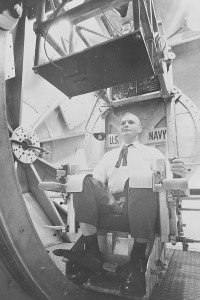
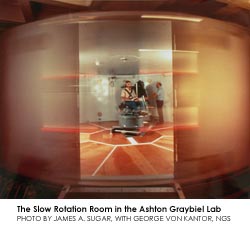
October-November: a group of USAF test pilots were sent through “stress tests” at Wright-Patterson AFB to evaluate their suitability for Dyna-Soar:
- Wood
- Rogers
- Knight
- Gordon
- Bock, Charles C.
- Daniel, Walter F.
- Rushworth, Robert
- Evans, Bud

November 4: Launch of Little Joe 1A (suborbital test of the Mercury LES with a planned abort under high aerodynamic load conditions). The abort maneuver, the prime mission of the flight, was accomplished at a dynamic pressure that was too low.
November 5: The astronauts were fitted with pressure suits and indoctrinated as to use at the B. F. Goodrich Company, Akron, Ohio. Between November 1959 and January 1960, 10 developmental full-pressure suits were delivered to the astronauts and other subjects.
November 7: Discoverer 7 launched from Vandenburg AFB on a Thor-Agena A.
November 20: Discoverer 8 launched from Vandenburg AFB on a Thor-Agena A.
November 26: Wearing the Mercury pressure suits, the astronauts were familiarized with the expected reentry heat pulse at the Navy Aircrew Equipment Laboratory,
Philadelphia, Pennsylvania.
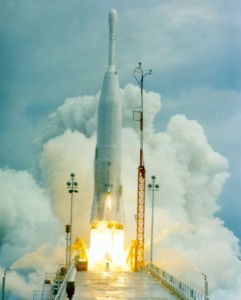
November 26: Failed launch attempt of a Atlas C-Able with Pioneer 5B from LC14. The goal was to place 372 pound satellite into orbit around the moon.
December 4: Little Joe 2-Mercury suborbital launch to test the Mercury launch escape system with a rhesus monkey, Sam, who survived until 1982. The abort sequence was initiated by timers after 59 seconds of elapsed flight time at an altitude of about 96,000 feet and a speed of Mach 5.5. Escape motor firing occurred as planned and the spacecraft was whisked away at a speed of about Mach 6 to an apogee of 53.03 statute miles. Sam experienced 19 g and 3 minutes of weightlessness. Biological telemetry was successful.


December 20: Dr. Melvin Calvin reported finding simple organic compounds and genetic precusors in meteorites.
December 31: NASA approves the recommendation of the Saturn Vehicle Evaluation Committee (Silverstein Committee), to pursue development of the Saturn launch vehicles:
- Saturn A
- Saturn B
- B-1 – Saturn lower stage, proposed clustered Titan second stage, proposed S-IV third stage and Centaur fourth stage
- Saturn C
- C-1 – Saturn lower stage, proposed S-IV second stage, S-V third stage
- C-2 – Saturn lower stage, proposed S-III second stage, proposed S-IV third stage, S-V fourth stage
- C-3, C-4, and C-5 – all based on different variations of a new lower stage using F-1 engines, variations of proposed S-II second stages, and proposed S-III, and S-IV upper stages.
The Silverstein Committee boldly emphasized that the upper stages would require LH2/LO2 to achieve the payload capabilities.

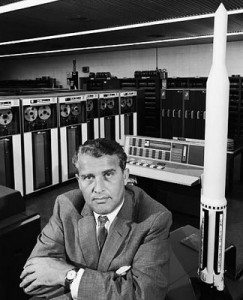


 Saturn Configurations (38.5 KiB)
Saturn Configurations (38.5 KiB)
December: The Mercury astronauts completed basic and theoretical studies of Project
Mercury in their training program and began practical engineering studies. This phase of the program was designed to provide a background in basic astronautical sciences, and included such subjects as “Space Climate” and “Astronomy of the Universe.” Shortly thereafter the astronauts began a practical training program involving egress training, methods of arresting rapid spacecraft motions, and familiarization with the weightless conditions of space flight.

December: Group 1 astronaut training: USAF, zero-gravity aircraft flights (zero-g familiarization), approximately 0.7 hours per astronaut. Up to 60 seconds per parabola, average of 40 minutes total weightlessness, in F-100F, C-131B, C-135 aircraft. Astronauts had been flying parabolic maneuvers in two-place F-100s at Edwards AFB, for up to 1 minute of 0G. Eating, drinking, and psychomotor tests were conducted while the astronauts were in a weightless state.
Journal of Aviation Medicine articles:
Graybiel, A, Holmes, R H, Beischer, D E, Champlin, G E, Pedigo, G P, Hixson, W C, Wilbarger, T, Stulken, D E, Anderson, W S, Clark, R, Berrian, J B. Account of experiments in which two monkeys were recovered unharmed after ballistic space flight.
JAM 1959 30: 871-931.
Introduction.
 30120871-1 (37.1 KiB)
30120871-1 (37.1 KiB)
 30120872-1 (1.2 MiB)
30120872-1 (1.2 MiB)
 30120894-1 (961.6 KiB)
30120894-1 (961.6 KiB)
 30120912-1 (749.1 KiB)
30120912-1 (749.1 KiB)
 30120924-1 (108.4 KiB)
30120924-1 (108.4 KiB)
 30120929-1 (70.3 KiB)
30120929-1 (70.3 KiB)
 Suborbital Monkeys (431.9 KiB)
Suborbital Monkeys (431.9 KiB)
Ward, J E, Hawkins, W R, Stallings, H. Physiologic response to subgravity I. Mechanics of nourishment and deglutition of solids and liquids.xxxxxxxxxxxxxxxxxxxxxxx JAM 1959 30: 151-154.
 30030151-1 (119.3 KiB)
30030151-1 (119.3 KiB)
von Beckh, H J. Human reactions during flight to acceleration preceded by or followed by weightlessness. xxxxxxxxxxxxxxxxxxxxxxxxxx JAM 1959 30: 391-409.
 30060391-1 (907.2 KiB)
30060391-1 (907.2 KiB)
Ruff, G E, Levy, E Z, Thaler, V H. Studies of isolation and confinement.
 30001 (140.0 KiB)
30001 (140.0 KiB)
Ward, J E, Hawkins, W R, Stallings, H D. Physiologic response to subgravity II. Initiation of micturition. xxxxxxxxxxxxxxxxxxxxxxxxxx JAM 1959 30: 572-575.
 30080572-1 (124.4 KiB)
30080572-1 (124.4 KiB)
Miller, H, Riley, M B, Bondurant, S, Hiatt, E P. Duration of tolerance to positive acceleration. xxx JAM 1959 30: 360-366.
 30002 (147.8 KiB)
30002 (147.8 KiB)
Lamb, L E. Medical aspects of interdynamic adaptation in space flight.
 30030158-1 (191.9 KiB)
30030158-1 (191.9 KiB)
Langham, W H. Implications of space radiations in manned space flights.
 30060410-1 (234.4 KiB)
30060410-1 (234.4 KiB)
Gerathewohl, S J. Work proficiency in the space cabin simulator.
 30100722-1 (1.5 MiB)
30100722-1 (1.5 MiB)
Konecci, E B, Trapp, R. Calculations of the radiobiologic risk factors in nuclear-powered space vehicle. xxxxxxxxxxxxxxxxxx xx xxx JAM 1959 30: 487-506.
 30070487-1 (447.0 KiB)
30070487-1 (447.0 KiB)
Schaefer, H J. Radiation dosage in flight through the van Allen belt.
 30090631-1 (219.0 KiB)
30090631-1 (219.0 KiB)
Willis RG, White SC. Closed Respiration-Ventilation System for Use with High Altitude Full Pressure Garment. xxxxxxxxxxxxxxxxxxxxxxxx JAM 1959 30: 344-350.
 30050344-1 (140.7 KiB)
30050344-1 (140.7 KiB)
Kaehler RC. Human Pilot Performance during Boost and Atmosphere Reentry.
 30070481-1 (152.1 KiB)
30070481-1 (152.1 KiB)
Rowen B. Human Factors Support of the X-15 Program.
 30110816-1 (116.3 KiB)
30110816-1 (116.3 KiB)
Strughold H. Simulated Atmospheres and Foreign Environments in Space Operations.
 30050311-1 (70.1 KiB)
30050311-1 (70.1 KiB)
Blanchard WG, Clarke NP, Moore F. Effect of Water Immersion on Human Tolerance
to Forward and Backward Acceleration. xxxxxxxxxxxxxxxxx JAM 1959 30: 872-878.
 30004 (143.6 KiB)
30004 (143.6 KiB)
Simons DG. The “Manhigh” Sealed Cabin Atmosphere. xxx JAM 1959 30: 314-325.
 30005 (236.2 KiB)
30005 (236.2 KiB)


